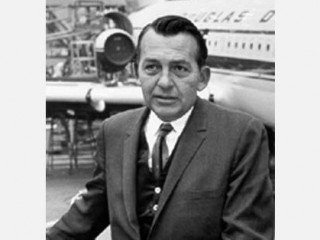
Donald Alexander Smith biography
Date of birth : 1820-08-06
Date of death : 1914-01-21
Birthplace : Forres, Morayshire, Scotland
Nationality : Canadian
Category : Politics
Last modified : 2011-02-24
Credited as : Politician , and diplomat, business leader
Donald Alexander Smith, 1st Baron Strathcona and Mount Royal , was a Canadian politician, diplomat, philanthropist, and business leader with extensive interests in the fur trade, railroads, and banking.
Donald A. Smith was born on Aug. 6, 1820, at Forres, Morayshire, Scotland. His father was a modestly successful merchant. Donald was educated at the Anderson Institution, Forres. In 1853 he married Isabella Hardisty, daughter of a Hudson's Bay Company official. Their only child was Margaret Charlotte, the heir to Smith's fortune and barony.
John Stuart, a Hudson's Bay Company trader and Smith's uncle, secured Smith's appointment to a company clerkship in 1838. After serving at Lachine and Tadoussac he was transferred in 1847 to Labrador, where he remained 13 years and became a financier. Business associates loaned him their savings, which he used to purchase Bank of Montreal shares. Smith rose through the ranks of the Company and became a chief trader, a chief factor, a company troubleshooter, and finally, in 1869, head of the Montreal Department. He became wealthy and invested heavily in Hudson's Bay Company shares and was a company leader when Canada purchased the company's territories in 1869. He was elected a director in 1883 and served as governor (1889-1914).
The first Riel rebellion (1869-1870) made Smith famous. Sir John Alexander Macdonald's Conservative government feared that the rising might invite American military intervention. Because of Hudson's Bay Company influence, Smith was sent to Red River to negotiate with Louis Riel, leader of the resistance. His impact, although considerable, was not decisive. Smith's confidential report on the rising remains a standard source for students.
Smith capitalized on his notoriety. In 1870 he secured appointment to the Executive Council of the Northwest Territories and was elected to Manitoba's Assembly. Until he resigned his provincial seat in 1874, he was a leader of the lieutenant governor's party. He was federal member of Parliament for Selkirk, Manitoba (1871-1879), until he was unseated for electoral malpractice. He later sat for Montreal West (1887-1896). Smith deserted Macdonald's first confederation government over the Pacific Railway scandal in 1873. Macdonald revived the issue during a debate in 1878. In a famous scene Macdonald declared, "That fellow Smith is the biggest liar I ever met." The Conservative leader then lunged at Smith screaming, "I can lick you quicker than Hell can scorch a feather." Actual blows were prevented, but for years Smith's 1873 desertion rankled Macdonald.
Although a member of Parliament for 17 years, Smith was most interested in business. During the 1870s he became a leading railroader. With several partners, including George Stephen, president of the Bank of Montreal, he purchased the St. Paul-Minneapolis and Manitoba Railway Company and became the firm's vice president. The line gained Smith experience and great wealth. In 1880 he and Stephen dominated the syndicate organized to construct the Canadian Pacific Railway. A major financier as well, Smith was president of the Bank of Montreal (1887-1905). He served as a director of the Patton Manufacturing Company, the New Brunswick Railway, the Canadian Pacific Railway Company, and the Dominion Coal Company.
Prime Minister Sir Charles Tupper appointed Smith Canadian high commissioner to London in 1896. He retained the post until his death in London on Jan. 21, 1914. Tough, proud, unscrupulous, and autocratic, Smith amassed a huge fortune. He was a liberal benefactor who contributed vast sums to such institutions as hospitals and universities—in Canada, Great Britain, and the United States. During the Boer War he equipped, as his personal contribution, a famous mounted regiment, the "Strathcona Horse." Honors were showered upon him, and he was appointed to the Canadian Privy Council in 1896 and to the Imperial Privy Council in 1904. In 1897 he joined the British peerage as Baron Strathcona and Mount Royal.
















